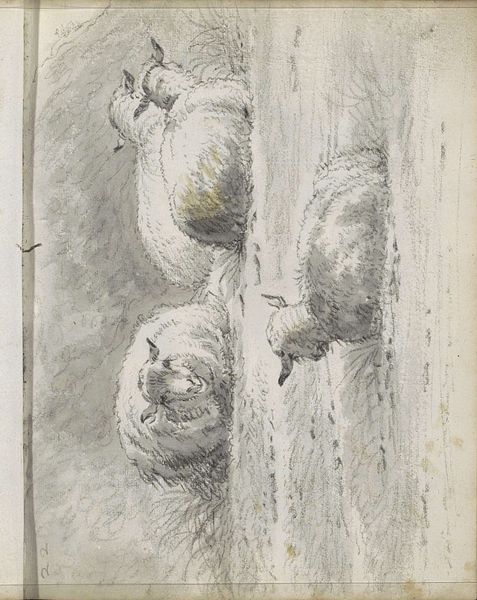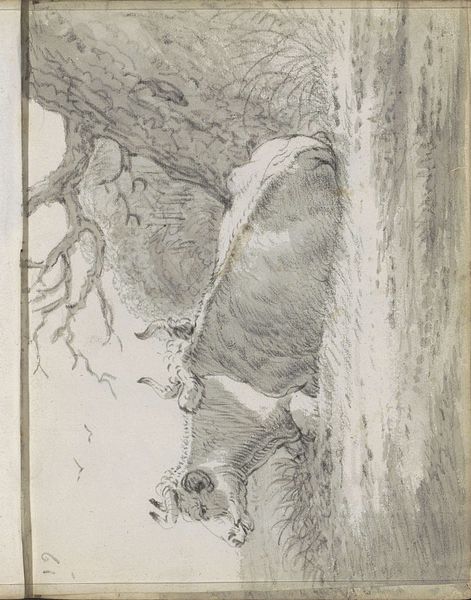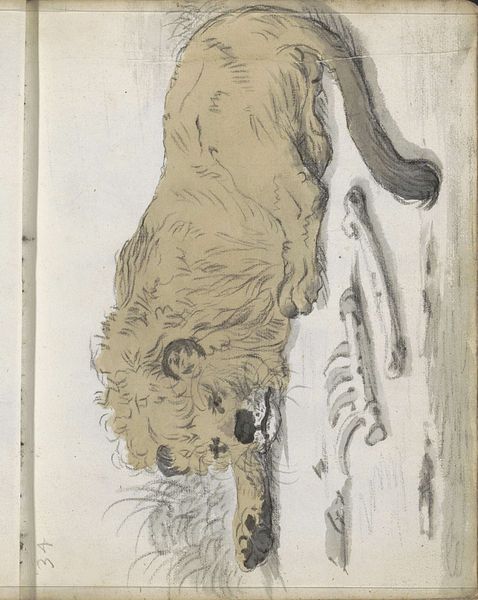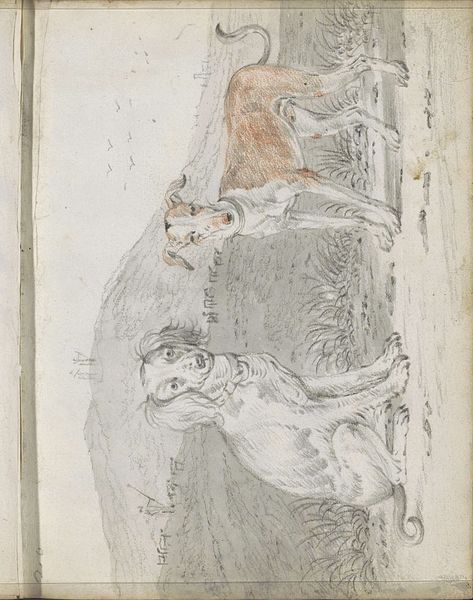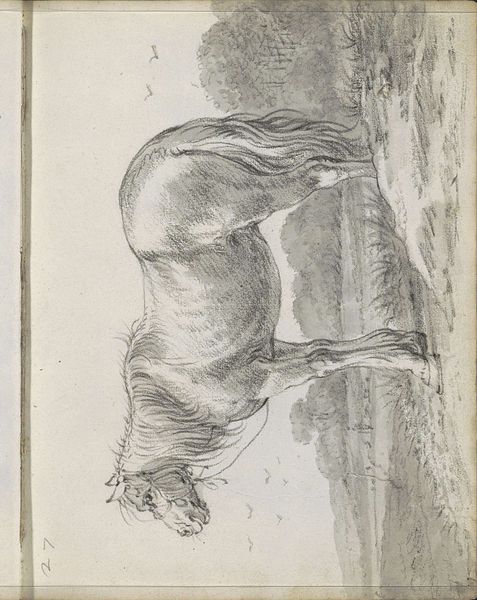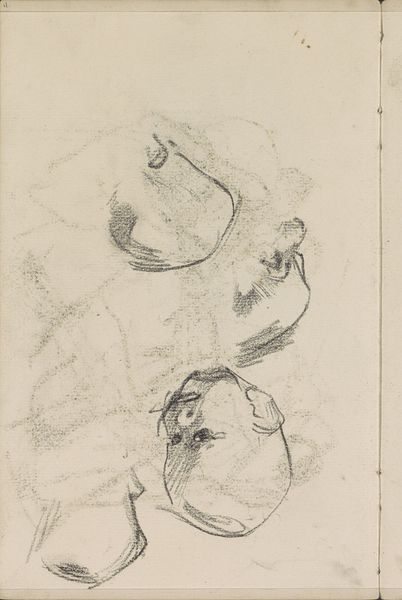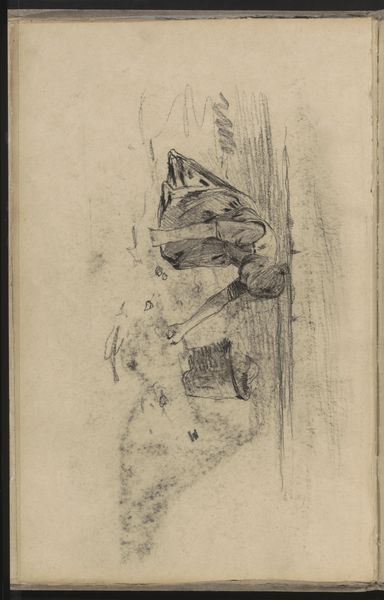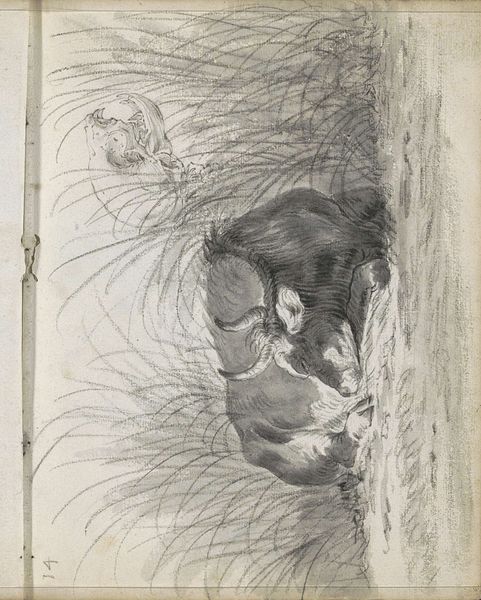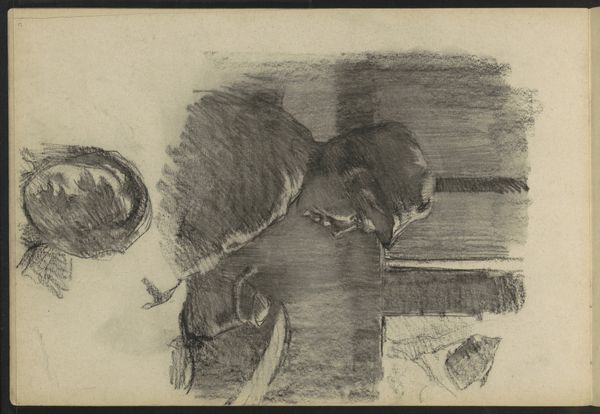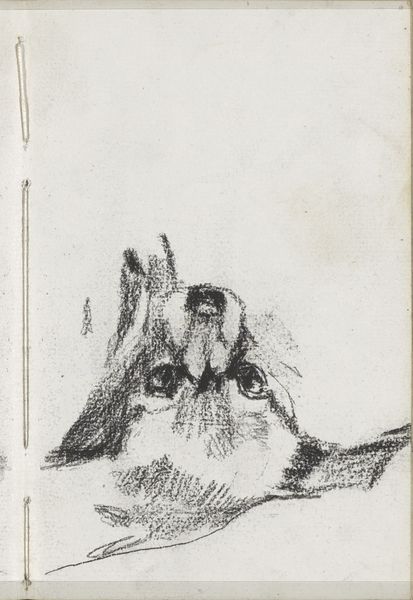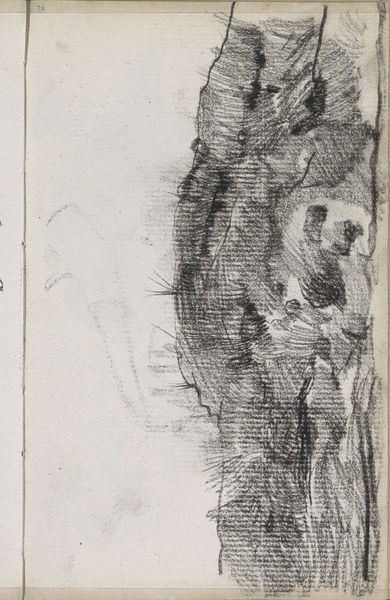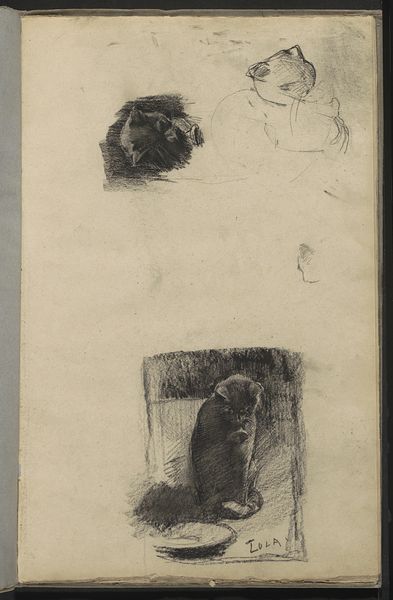
drawing, pencil
#
drawing
#
dutch-golden-age
#
pencil sketch
#
landscape
#
charcoal drawing
#
pencil
#
genre-painting
Copyright: Rijks Museum: Open Domain
Editor: This drawing, "Liggende schapen aan de voet van een heuvel," was made in 1666 by Cornelis Saftleven using pencil. It feels very immediate, a glimpse of a rural scene. I’m curious, what strikes you most about its composition? Curator: Immediately, the sinuous lines forming the sheep, combined with the implied texture of the wool, draw my eye. Saftleven isn’t concerned with strict realism. Instead, he uses the pencil to create a series of rhythmic forms. Editor: So, you're focusing on how the lines create the image, rather than what the image depicts? Curator: Precisely. Note how the overlapping of forms creates a sense of depth, despite the relatively flat plane. Observe also the limited tonal range. Saftleven relies on subtle gradations to suggest volume and light, focusing less on chiaroscuro. Are these subtle value shifts apparent to you? Editor: I see how he’s used shading to create depth, especially around the sheep closest to us, but the landscape feels more sketched-in. Curator: The juxtaposition of the defined sheep and the less detailed landscape is crucial. The textural difference heightens the impact of the animal forms, creating a focal point within the composition, guiding the eye accordingly. Editor: That's interesting. I initially saw it as a simple scene, but looking closer, I appreciate the choices Saftleven made in terms of line and form. I might think about landscape differently now. Curator: Indeed. Saftleven prompts us to recognize how artistic expression resides within the formal elements themselves, independent of external reference. The aesthetic experience rests within the internal language of the image.
Comments
No comments
Be the first to comment and join the conversation on the ultimate creative platform.
